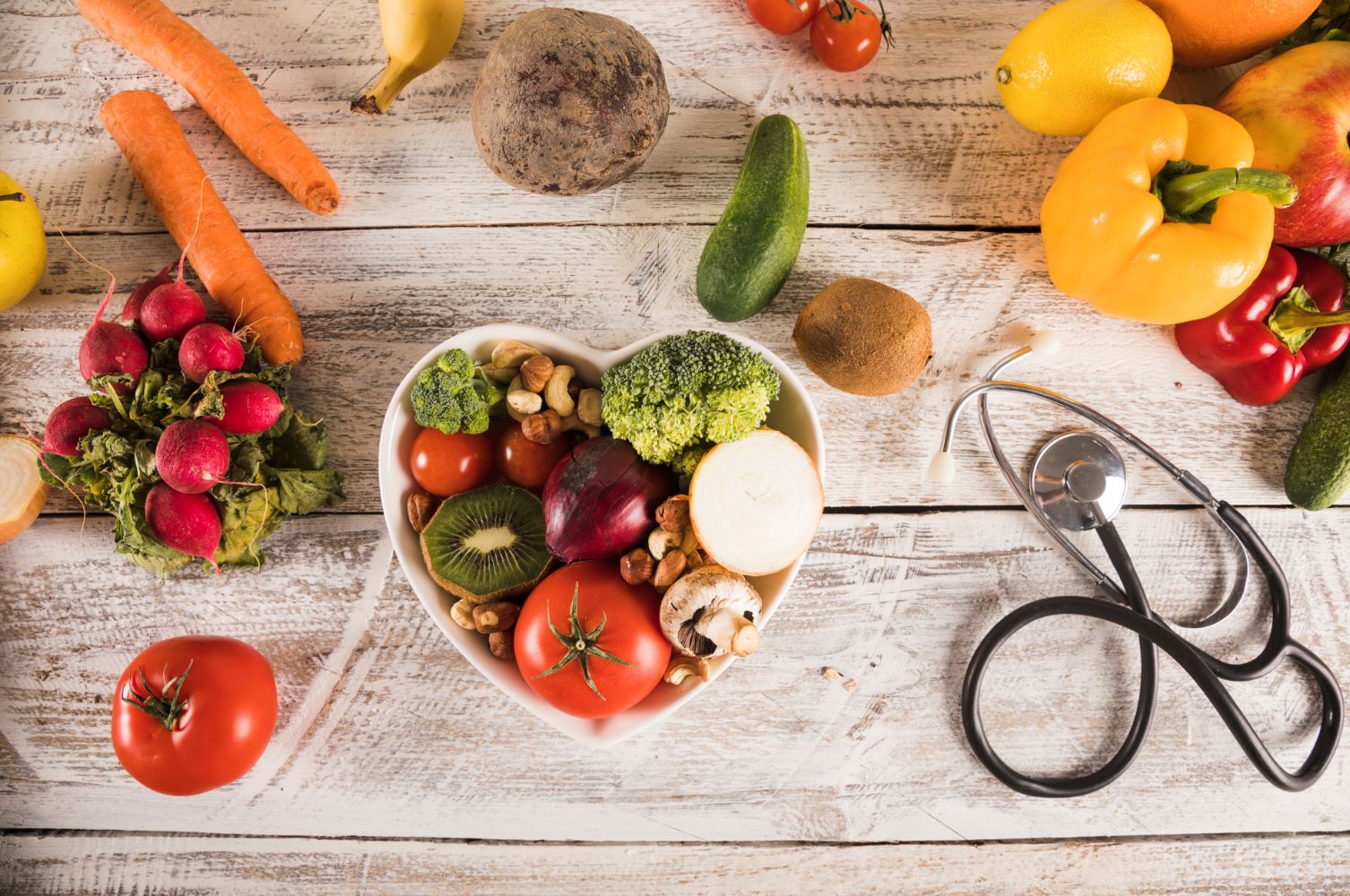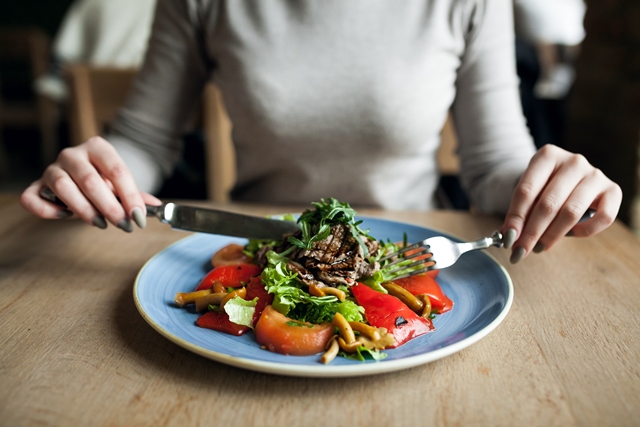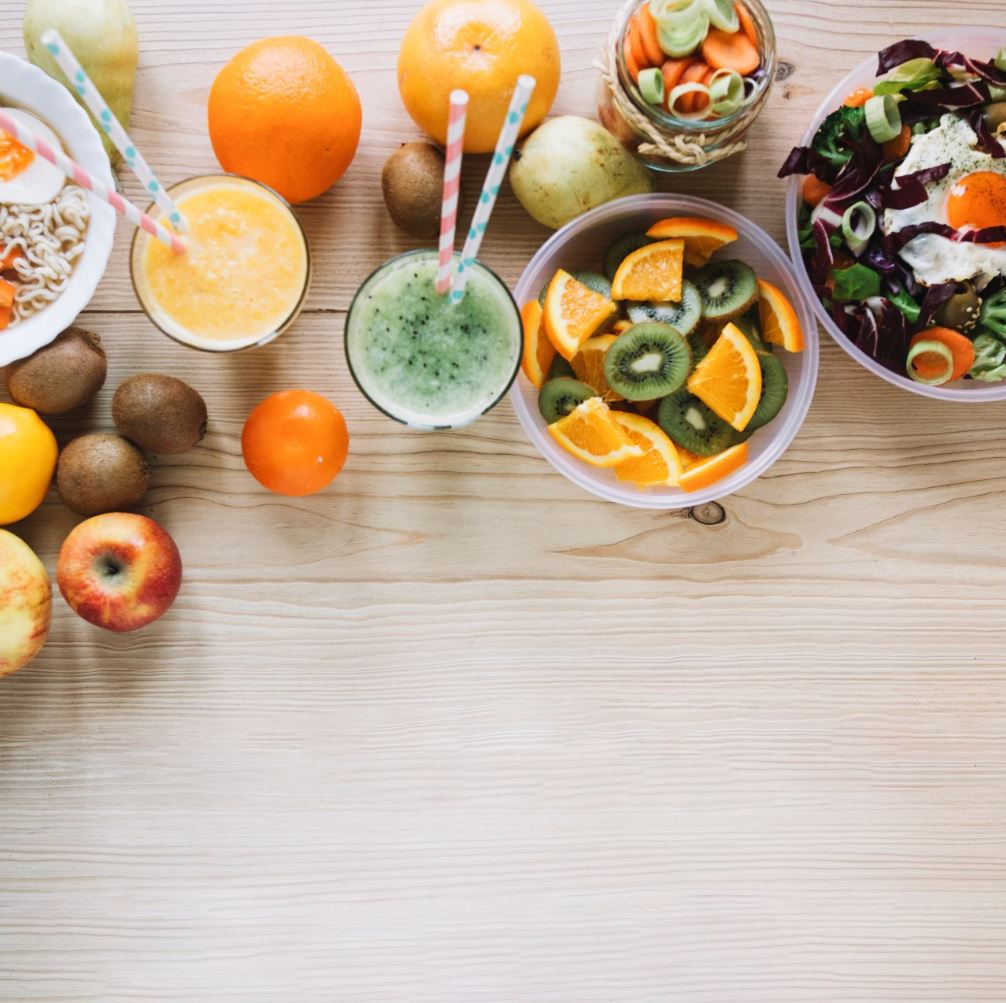In what consists a healthy diet
Lee the complete content in Infermeravirtual.com
A healthy diet

How is a healthy diet?
Complete, because it contains all food groups that, in combination, contribute all necessary nutrients.
Balanced, because it adds amounts appropriated foodstuffs, but without excesses.
Enough, because it covers the needs of the organisation to allow the growth and the development in the children and to maintain the body weight in the advisable limits in adults.
Varied, because it gives contribute them necessary of vitamins and minerals, when including different food groups.
Suitable to the characteristics of the individual and to its circumstances, as the age, the sex, the complexión bodily, the physical activity and the medical history of each person, as well as food habits, the way of life, the socioeconomic situation, the forced residence and the period of the year.
Practice and attractive, so that is of easy preparation, apetecible and with a good presentation, with variety of textures, colours and temperatures. All of this must be accompanied by a healthy lifestyle, which includes regular physical activity, enough rest, a lack of toxins and good hygiene habits. To follow the guidelines of healthy recommendations it is significant to take into account following general guidelines.
General guidelines
- Carry out throughout the day between four and five meals little abundant ones (breakfast and/or average tomorrow, luncheon, tea party and dinner) and to try not to chop between them. Is recommended not to jump meals, mostly the breakfast, that it is the basic food that it contributes the energy necessary to face the day. In children and adolescents, it helps to achieve better physical and academic performance, as well as familiarising children with proper eating habits.
- Maintain a suitable hydration. Drink an enough amount of water throughout the day, preferably between meals and, in smaller amount, during meals. The most recommended drinks are water, infusions, vegetable broths or fruit and vegetable juices or shakes (made of ingredients like carrots and pears). It is advisable to avoid energy drinks or only drink them occasionally. This is because of their high content of caffeine and other stimulating substances, as well as commercial soft drinks that are carbonated and contain sugars. It is recommended to drink 1.5 to 2 litres of liquids per day.
- Eat slowly, chewing good foodstuffs and in a relaxed and untroubled atmosphere. Chewing is very important: this is the start of good digestion. You should chew each portion of food in your mouth at least 20 times. We produce 1.5 litres of saliva per day, so a person who chews a lot swallows more saliva, digests better and feels fuller.
- Lower the alcohol consumption and to avoid drinks of graduation registration. In the older persons, the moderate consumer spending and cancellation drunk person responsible for graduation as it came the, the beer, digs the or the cider can be part of the healthy diet. In men, it is recommended not to exceed two or three units of alcoholic beverages per day and, in women, one and a half. A glass of wine or a bottle of beer counts as one unit. Children, teenagers, pregnant or breastfeeding women, or people who have to drive or do work that requires high concentration should never consume alcoholic beverages. Non-alcoholic beer can be a good option for adults who want to completely avoid alcohol.
- Use simple methods for the baking of the foodstuffs, with little fat and little salt. most healthy recommended bakings are the sautéed one, the roast one, the grill, bakings to the papillote, to the steam and, with smaller frequency, the fried ones and coated in (maximum two to three times a week). It is advised to remove visible fat from poultry meat and skin before cooking.
- Consume preferably following foodstuffs:
- Olive oil, so much for the baking as to season or spice. Between three and six servings per day are recommended (a portion is a tablespoon of oil, i.e. 10 ml).
- Milk as the milk, the yoghurt and the cheese. These should preferably be low-fat varieties. Two to four servings per day are recommended, depending on which life stage you are in.
- Meat and birds with little fat, as a chicken (better without the skin), turkey, rabbit, pieces magras of pig, ham magro (cooked or salty), or meat of lean beef.
- White fish (hake, monkfish, sole, grouper, rooster, golden, etc.) and blue fish preferably of small or middling measure (mackerel, sardines, anchovies, nice, salmon, etc.). When it comes to the blue fish, one should keep in mind the fact that lately pollution of mercury has been detected in certain measure species big, as they are the swordfish (emperor), the shark, the red tuna (Thunnus thynnus) and the pike. For this reason, the Spanish Agency Food Safety and Nutrition (AESAN) recommends that the consumption of these species is avoided among sensitive populations, such as pregnant women, breastfeeding women and young children under 3 years of age. It also recommends limiting the total consumption of these species to 50 g per week or 100 g every 2 weeks in children from 3 to 12 years of age. It is necessary to remember that the blue fish contributes highly healthy profits, since is rich in essential fatty acids omega-3 of long-chain, considered nutrients essential for the human organisation, which is not able to synthesise them by itself.
- Seafoods and crustaceans (prawns, shrimps, mussels, clams, cockles, octopus, squid and sepia)
- Eggz. Between 2 and 4 units is recommended a week.
- Nuts. A moderate consumer spending is recommended. With a portion of 20 g every day is enough to contribute a good one amount of fats very healthy (a handful of almonds, a handful of hazelnuts, four walnuts, etc.).
- Vegetables (all, raw and cooked). It is recommended that are present in the luncheon and the dinner. They can be a first course, along with some potatoes, rice, pasta or legumes, or they can accompany a second course of fish, meat or egg. 150 g to 200 g is the recommended portion at each main meal.
- Farinaceous as the potato, the bread, the dough, the rice, legumes, the couscous, the polenta, cereals of the breakfast (preferably all-inclusive). It is significant that are present in every food of the day. For breakfast or an afternoon snack, in the form of bread or cereals, and at lunch and dinner, in the form of rice, pasta, potatoes, etc.
- Consume just occasionally foodstuffs with a tall fats content as the next ones:
- Peanut butter, cream, margarine, mayonnaise, cream, ice cream.
- Cold meats such as chorizo, salami and mortadella, as well as bacon, sausages, pâtés (of any kind), etc.
- Very fatty cheeses, such as brie or roquefort, or very dry cheeses, such as parmesan, manchego, etc. Cheeses such as emmental should also be eaten in moderation, due to their richness in calcium, as well as soft, fresh and semi-cured cheeses.
- French fries, cheese snacks and snacks in general.
- High-fat meat such as pork, lamb, chicken, goose, duck, commercial burgers, sausages and offal in general.
- Industrial cake shop or viennoiserie (Donuts, croissants, ensaimadas, tykes, cañas, palm trees, packed buns…). Homemade versions can be consumed occasionally.
Finally, we must emphasise that, in addition to the healthy diet, the pillars of the healthy way of life are the physical activity, the absence of toxic and a suitable break.
The importance of the hydrates of carbon

The main function of these nutrients is that one of to produce the energy necessary to develop activities of the daily life , for this reason have to constitute around 45% - 60% of contributes the nutritional of the person. Hydrates of carbon are people in charge, basically, of securities of the sugar in the blood. Although is recommendable that the person with diabetes takes hydrates of carbon in all meals, those which are discussed with insulin or with certain antidiabetic oral (as the sulfonilureas and the glinidas), they must take them mandatorily in all to avoid decompensations of the glycemias.
Tipos of hydrates of carbon: Hydrates of carbon are found basically in the foods of plant origin and they can be simple or complexes. It is significant to know foodstuffs that contribute simple carbon hydrates or complexes, since this fact, together with the type of baking and the variety of foodstuffs that contains the food, will do that blood sugar levels are more or less high.
General, is owed to take into account that hydrates of simple carbon cause higher glycemias that complex carbohydrates.
- Foodstuffs with simple carbohydrates Between rich foodstuffs in simple carbohydrates (HC), are found: sugary drinks, fruit juices (natural or packed), soft drinks (cabbages, naranjadas), the sugar, candies, the fruit (melon, pear, banana, etc.) and the milk ones. Not all hydrates of simple carbon (HC) must delete of the allowance. A balanced diet owes include fruit and milk, but provided that is taken into account, topcoat in the case of the fruit, that should not take alone, such as to do a tea party by fruit, but instead that the fruit is better is better to take her of dessert at the end of a food or, if is wanted to eat when the tea party, it would be appropriate to take her together with nuts (almonds, hazelnuts, walnuts) or milk. Fats of the food or of the same nuts promote that the emptied gastric (step of the foodstuffs from the stomach to the duodenum) is slower and, therefore, the absorption of the foodstuffs and the elevation of the sugar in the blood is more progressive and not so fast. There are other hydrates of simple carbon that it is necessary to exclude of the allowance of a person with diabetes, as are: the sugar, the honey, the marmalade, the condensed milk, the cake shop craftswoman and industrial, candies, ice creams, the chocolate and its derivatives, soft drinks with sugar, fruit juices and alcoholic drinks. Despite the fact that there are alcoholic drinks in which the amount of hydrates of carbon is practically null, as distillates, there are drinks as the chupitos that they have a tall one within sugar and that would be owed of avoiding for the sugar that they can have and for the effect of blocking the glycogen.
- Foodstuffs with complex carbohydrates The principals foodstuffs with complex carbohydrates are: the white dough or integral, potatoes, the boiled rice or integral, the white bread or integral, legumes, the all-inclusive cereals or whites, and vegetables and vegetables.
- Foodstuffs with complex and fibre carbohydrates The fibre is a complex carbohydrate that it can not be decomposed by the digestive enzymes and, therefore, is not absorbed by the organisation. The amount of recommended fibre for a person with diabetes is 30-35 g/day.
Advantages of doing an allowance enough rich in fibre are:
- The regulation of the intestinal transit. Some types of fibre promote the intestinal mobility because they increase the volume of the faeces and they soften the fecal skittle, which provides depositions.
- The regulation of the glucose levels in the blood, since the fibre does slower the emptied gastric (step of the foodstuffs from the stomach to the duodenum). The enlentecimiento of the emptied does that the absorption of the foodstuffs' sugar is more gradual and, therefore, the glycemias subsequent to meals are more controlled.
- The rise of the sensation of satiation. The enlentecimiento of the emptied gastric does that the person has the sensation of satiation during more time.
- Hinder the absorption of the cholesterol, since assistance to the elimination of cholesterol certain quantity via faeces and, therefore, contributes to decrease its securities in the blood.
They exist various types of fibre, but the more advisable for a person with diabetes is the soluble one, that is found in the legumes, fruits, vegetables, and some cereals as the oat. When it comes to the cereals, when is talked of soluble fibre, is made reference basically to the oat, although the rest of cereals also contain, but in less proportion.
Distribution and proportion of carbon hydrates recommended
The advised distribution of the total of hydrates of carbon (HC) throughout the day, to maintain stable the glucose level in the blood, is:
- 15% breakfast
- 10% average tomorrow
- 30% food
- 10% tea party
- 30% dinner
- 5% tentempié before turning in
This distribution can vary according to the type of activity of the person and of the established medication, most notably in the case of the insulins. When it comes to the proportion of carbon hydrates recommended, of the total of carbon hydrates ingested in a main food, 90% should be complexes (legumes, dough, rice, potatoes, bread, cereals) and 10% should be simple (fruit).
3. What is the index glucémico?

The index glucémico measures the skills that has a food of raising the sugar in the blood after two hours of having taken. It is significant to know foodstuffs that they raise less the sugar in order to be able to control better glycemias postprandiales (subsequent to meals).
It is necessary to know that:
- The index glucémico does not depend just of the type of food of that is discussed, but instead that it depends also of the time that they take foodstuffs in happening from the stomach to the duodenum (emptied gastric), where are absorbed. Thus, fats, proteins and the fibre enlentecen the emptied and, therefore, the nutrients within foodstuffs are absorbed more slowly, and all of this contributes to do that the glycemia does not go up sharply but instead gradually.
- Foodstuffs that they raise less the sugar are: lentils, chickpeas, peas, broad beans, dry beans (half notes), the dough, the milk, the yoghurt, the apple, the orange, the all-inclusive foodstuffs, general vegetables, etc.
- The technique of baking of a food also influences in the index glucémico, for example, cooked foodstuffs “to the give you” they raise less the sugar in the blood. Certain foodstuffs' prolonged baking produces a breakage of the starch that they contain, fact that originates smaller molecules, which it allows a digestion and a faster absorption and, therefore, a faster rise of the glucose level in the blood.
- The level of acidity of foodstuffs or of meals does that the index glucémico is lower. It would be good, for example, to season salads with a vinaigrette sauce.
In order to to maintain stable the glucose level in the blood is significant that:
- Is secured to include in all the meals foodstuffs with low index glucémico.
- Varied meals are done (different types of foodstuffs), to promote an index glucémico low. An example of food that it combines properly foodstuffs would be:
- Chickpea and rice salad with vinaigrette sauce: salad (fibre) + vinaigrette sauce (takes oil, in other words, fats) + chickpeas (complex carbohydrates with low index glucémico) + rice “to the give you” (complex carbohydrates with tall index glucémico)
- Chicken to the oven (fats and protein)
- 1 apple (simple carbon hydrates with low index glucémico)
- Despite the fact that there is rice, that it is a food with an index glucémico higher, the fact that it is “to the give you” and of that is taken in eaten self with fats, proteins and fibre, will do that the glycemia after the food does not increase quickly but instead in a progressive way.
